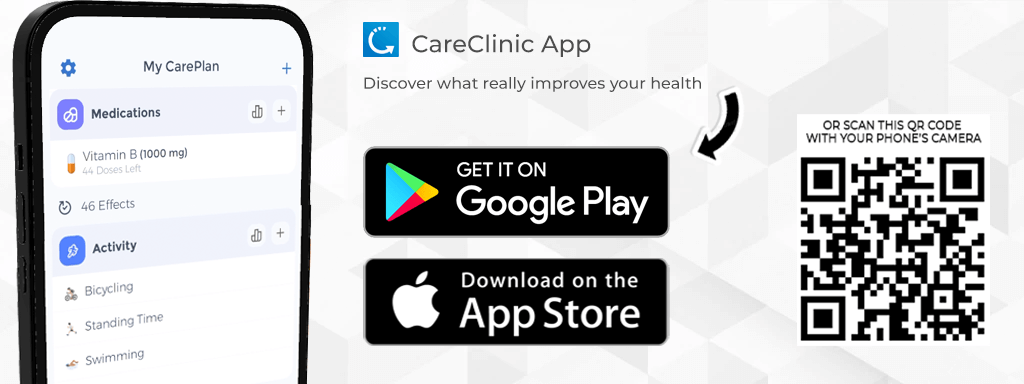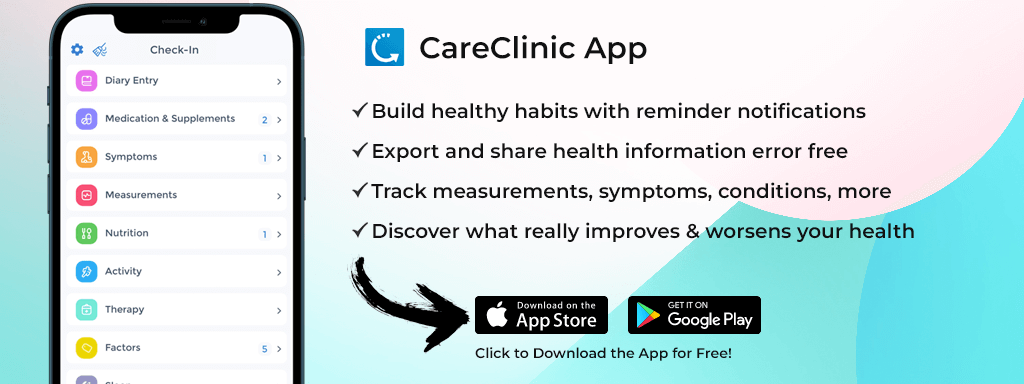 A mental health planner is a tool that can be used to help manage and monitor mental wellness. It can be used to keep track of appointments, medications, and other important information related to mental health. Additionally, a mental health planner can help individuals set goals and track progress over time.
A mental health planner is a tool that can be used to help manage and monitor mental wellness. It can be used to keep track of appointments, medications, and other important information related to mental health. Additionally, a mental health planner can help individuals set goals and track progress over time.
Table of Contents
- Which conditions can a mental health planner help with?
- Benefits of using a mental health or self care planner
- Digital Planner or Paper Diary, what are the benefits?
- Get to know positive psychology and its role in self-care
- Addressing the negative voice in your head
- What to write about in your self-care planner
- Coping with anxiety and stress
- How to use a health planner to address depression?
- Creating a Daily Schedule
- How can bullet journaling help with mental health?
- Consider Guided Journaling
- CareClinic for Mental Health Management
- Will you use a Mental Health Planner?
Which conditions can a mental health planner help with?
A self care planner can help manage any number of mental conditions, including anxiety, depression, bipolar disorder, and schizophrenia. Additionally, a self-care planner can be used to help manage stress, sleep disorders, and other issues that may impact overall well being.
Benefits of using a mental health or self care planner
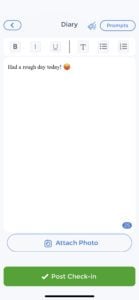 Some benefits of using a self care planner include increased organization, improved communication with healthcare providers, and enhanced self-awareness and self love. Additionally, research has shown that using a wellness planner can improve medication adherence and overall mental health outcomes.
Some benefits of using a self care planner include increased organization, improved communication with healthcare providers, and enhanced self-awareness and self love. Additionally, research has shown that using a wellness planner can improve medication adherence and overall mental health outcomes.
Now you may be wondering, do you only need a self care planners if you have a mental illness? The answer is no! Self care planners can be beneficial for anyone who wants to improve their mental well-being.
If you do have a condition they work great as you can put your sample treatment plan inside and follow it and note down your progress. If you are not following an immediate routine, consider using one as a mood tracker or an overall wellness journal. I will explain more about how to use a planner for these things below.
Digital Planner or Paper Diary, what are the benefits?
Self care toolkits come in many different forms, from digital apps to paper journals. There is no wrong way to use a mental health diary, so choose the option that works best for you. Digital planners offer the convenience of being able to access your information anywhere, anytime. Additionally, many digital planners come with features like password protection and the ability to share information with a healthcare provider.
Paper diaries offer the benefit of being a more tangible way to track your mental health. Many people find it helpful to physically write out their thoughts and feelings. Additionally, paper diaries can be customized with different covers and pages to fit your needs.
Get to know positive psychology and its role in self-care
Positive psychology is the scientific study of what makes life most worth living, emphasizing self-care as a pivotal component. It’s a relatively new field that explores how we can live happier, more fulfilled lives by understanding and harnessing our strengths and capabilities, and incorporating self-care practices to enhance our well-being.
Through research and experimentation, positive psychologists have identified several key factors that contribute to happiness and well-being, aligning closely with self-care principles. These factors include nurturing positive relationships, finding a sense of meaning and purpose in life, fostering a feeling of autonomy and control over one’s life, and achieving a sense of accomplishment.
While traditional psychology often addresses mental illness and psychopathology, positive psychology offers a refreshing perspective. It focuses on enhancing what’s right with people and promoting self-care strategies that bolster well-being.
Positive psychology aims to guide individuals towards happier, more fulfilling lives by leveraging their strengths and abilities, underscored by self-care routines. By understanding what makes life most worth living, we can all embrace self-care methods to live our best possible lives, reinforcing the core values of positive psychology.
What are some of the key principles of positive psychology?
Some key principles guide the field of positive psychology. These include the focus on strengths and virtues: Positive psychology focuses on identifying and developing people’s strengths and virtues, rather than their weaknesses. This helps individuals to build on their existing strengths and to find new ways to thrive. This will be the focus of our mental health planner below.
Addressing the negative voice in your head
We all have that negative voice in our head that tells us we’re not good enough, that we can’t do it, etc. A great way to combat that negative voice is to write it down.
Some things you may want to include are:
- What does the negative voice say?
- Why is it saying that?
- What is the evidence for and against what it’s saying?
- How can I reframe what it’s saying in a more positive light?
Writing about these things can help you identify the negative voice, understand why it’s saying what it’s saying, and reframe it in a more positive light. An example would be if the negative voice said “you’re not good enough,” you could reframe it to say “I am doing my best and that is good enough.”
Use your journal as a tool to brainstorm solutions
If you’re feeling stuck or overwhelmed, sometimes it can be helpful to write out your thoughts and brainstorm some possible solutions.
Some things you may want to include are:
- What is the problem?
- What are some possible solutions?
- What are the pros and cons of each solution?
- What is the best course of action?
Writing about these things can help you identify the problem, brainstorm possible solutions, and choose the best course of action.
What to write about in your self-care planner
Self Reflection
One of the most important things you can do for your mental health is to take some time each day for self-reflection. This can be done in a journal or simply by taking a few moments to sit quietly and think about your day.
Some things you may want to reflect on include:
- How did my day go?
- What did I accomplish today?
- What are some things I am grateful for?
- What are some things that stressed me out today?
- How did I handle stressors today?
- What could I have done differently today?
- What are some things I am looking forward to tomorrow?
Writing about these things can help you process your day, identify patterns, and make changes to improve your mental health.
Discuss how to heal from past trauma
If you have experienced trauma, journaling can be a helpful way to process your thoughts and feelings. Writing about your experiences can help you make sense of them and begin to heal.
Some things you may want to write about include:
- What happened?
- How did I feel at the time?
- How do I feel now?
- What are my triggers?
- What are some healthy coping strategies I can use when I am triggered?
- What is my healing journey look like?
Remember, there is no right or wrong way to journal about your experiences. Writing about your trauma in a safe and supportive environment can be a powerful step in your healing journey.
Set Goals and Track Progress
If you are working on making lifestyle changes, a mental health tracker can be a helpful tool in tracking your progress.
Some things you may want to track include: Diet, Exercise, Sleep, Stress level, Mood & Emotions
Writing about these things can help you identify patterns and make changes to improve your mental health. Additionally, seeing your progress over time can be motivating and help you stick to your goals.
Practice Gratitude
One of the simplest yet profoundly impactful actions you can take for your mental health, self-care, and personal growth is to practice gratitude. Daily, allocate a few moments to jot down aspects of your life you’re thankful for.
This act of gratitude can relate to anything significant or minor, ranging from your overall health to a thoughtful gesture from a stranger, fostering a positive outlook that contributes to your journey of personal growth.
Some things you may want to include are:
- My health
- My family and friends
- My home
- My pets
- A kind act I witnessed
- A beautiful sunset
Expressing gratitude can help shift your focus from negative to positive, which can improve your overall mental health.
Mental Health Check-Ins
In addition to daily reflection, it can also be helpful to do periodic check-ins with yourself. This can be done weekly, monthly, or yearly – whatever works best for you.
Some things you may want to reflect on include:
- How is my mental health?
- What has changed since my last check-in?
- What are some things I am doing well?
- What are some areas I need to work on?
- What are some goals I want to set for myself? To achieve self love.
Mental health check-ins can help you identify patterns and make changes to improve your overall mental health.
How to use your self-care planner as a mood tracker?
Incorporate mood tracking into your self-care planners to monitor your emotional fluctuations over time. This technique is valuable for uncovering recurring emotional patterns and identifying what sparks certain moods. Moreover, observing your mood shifts can illuminate the effects of various stressors and coping mechanisms on your mental wellness.
To begin mood tracking, opt for a simple rating scale (like 1-5 or 1-10) and assess your mood at each day’s close. Enhance your entries by noting what influenced your mood, the coping strategies employed, and an overall summary of your day. CareClinic offers a digital trigger tracker with a scale, facilitating easy search, visualization, and correlation of your mood with broader health aspects.
As you persist, you’ll gain insights into how diverse elements affect your mood. This knowledge is crucial for tailoring lifestyle adjustments aimed at bolstering your mental health. Through consistent mood tracking in your self-care routine, you’re equipped to make informed decisions that foster personal growth and emotional well-being.
Using self care planners as a wellness journal
In addition to mood tracking, employ your self-care planners to monitor various facets of your mental well-being. This includes sleep, diet, exercise, and social interactions. Write notes on these aspects in your planners to capture a comprehensive view of your daily routines and their impact on your mental health.
Observing and recording this data can unveil patterns, enabling you to make adjustments that enhance your mental wellness. For instance, you might discover improved sleep quality with regular exercise or increased vitality from a nutritious diet.
Moreover, journaling within your self-care routine acts as a simple self-care practice on its own. The process of writing can serve as a therapeutic outlet, assisting you in navigating your thoughts and emotions. By taking the time to write notes about your experiences, you’re engaging in a mindful reflection that can significantly contribute to your emotional and mental health.
How to use your self care planners as a medical treatment planner?

If you have a mental illness, you may be working with a healthcare provider to develop a treatment plan. This plan may include things like medication, therapy, and lifestyle changes. This can be good helpful resources.
A mental health planner can be a helpful tool in following your best self care planners. You can use your self care planners to keep track of appointments, medications, and other important information. Additionally, a mental health planner can help you set goals and track progress over time.
If you’re not collaborating with a healthcare provider, you can still utilize your self-care planners to craft a self-care plan aimed at feeling good and compile useful resources. This plan may encompass healthy coping strategies, relaxation techniques, and stress management methods. By integrating these practices into your daily routine, you can create a foundation for feeling good consistently, supporting your overall well-being and resilience in the face of life’s challenges.
Coping with anxiety and stress
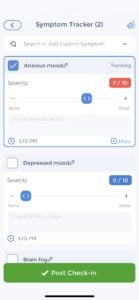 Anxiety and stress can be very overwhelming and can make it difficult to function in day-to-day life. A great way to combat anxiety and stress is to use your journal as a tool to cope.
Anxiety and stress can be very overwhelming and can make it difficult to function in day-to-day life. A great way to combat anxiety and stress is to use your journal as a tool to cope.
Some things you may want to include in your best self care planners are:
Coping strategies:
- What are some things that help you calm down?
- What are some things that make your anxiety worse?
- What are some things you can do to avoid triggers?
- What are some things you can do when you are feeling anxious or stressed?
Stressors
- What are some of the things that are causing you stress?
- How can you reduce or eliminate these stressors?
Triggers
- What are some of the things that trigger your anxiety or stress?
- How can you avoid these triggers?
Thoughts and feelings
- What are you feeling right now?
- What are some of the thoughts going through your head?
- What would happen if you didn’t allow these thoughts to control you?
Incorporating a daily tracker into your journaling routine can significantly enhance your ability to process thoughts and feelings, proving especially beneficial for managing anxiety and stress. By using journaling as a coping strategy, alongside a dedicated daily tracker, you can efficiently identify patterns and triggers for anxiety and stress. This method not only helps in understanding your emotional responses but also in developing personalized strategies for better stress and anxiety management.
How to use a health planner to address depression?
Depression is a serious mental health condition that can negatively impact every area of your life. If you’re struggling with depression, it’s important to seek professional help and create a treatment plan and best self care planners.
To use a health planner to address depression, start by brainstorming your goals. What do you hope to achieve? Once you have your goals in mind, start brainstorming action steps that will help you reach those goals. For example, if your goal is to improve your sleep, you might want to follow a bedtime routine.
Your action steps for the above will be:
- Going to bed and waking up at the same time each day,
- Avoiding caffeine and alcohol before bed,
- Avoiding screens for 30 minutes before bed,
- Reading or doing a relaxation exercise before bed.
As you start to implement your action steps, be sure to track your progress in your health planner. This will help you see what’s working and what isn’t. Additionally, tracking your progress can help you stay motivated to stick with your treatment plan.
Creating a Daily Schedule
![]() The first step is to figure out what a “normal” day looks like for you. This may be difficult if you have not been following a set of daily routine recently, but it is important to try to stick to some sort of schedule.
The first step is to figure out what a “normal” day looks like for you. This may be difficult if you have not been following a set of daily routine recently, but it is important to try to stick to some sort of schedule.
Start by creating a list of all the activities you need to do in a day, including things like:
Wake up
Eat breakfast
Take medication
Get dressed
Make the bed
Brush teeth
Start work
Take a break
Lunchtime
End work
Free time – what will you do?
Dinner time
Evening routine – winding down for bed
Get into bed
Sleep
Once you have made your list, start to assign timeframes to each activity. For example, you may give yourself 30 minutes for breakfast and 45 minutes for lunch. Don’t worry if the timing is not exact, this is just a guide to help you structure your day.
Once you have a basic daily schedule, you can start to add in other activities that you want to do, like exercise or spending time with friends. Again, try to assign a specific time for each activity so that you don’t end up feeling overwhelmed.
Now that you have a daily schedule, it’s important to stick to it as much as possible. Of course, there will be days when things don’t go as planned, but try to stick to your schedule as much as you can.
If you find it difficult to stick to a schedule, you may want to consider setting alarms or reminders on your phone to help you stay on track. Additionally, it may be helpful to tell a friend or family member about your schedule so they can hold you accountable.
Tips for Sticking to Schedule
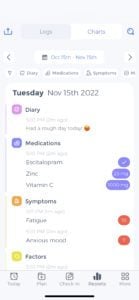 Make sure your schedule is realistic. If you try to pack too many activities into your day, you’re likely to get overwhelmed and give up.
Make sure your schedule is realistic. If you try to pack too many activities into your day, you’re likely to get overwhelmed and give up.
Start small. If you’re having trouble sticking to a schedule, try starting with just a few activities. As you get better at sticking to your schedule, you can start to add more activities.
Be flexible. Don’t be afraid to adjust your schedule as needed. If you find that you’re constantly missing your workout because you’re too tired, try moving it to a different time of day.
Find a buddy. Having someone to hold you accountable can be a great motivator. Find a friend or family member who is also trying to stick to a schedule and check in with each other regularly.
Reward yourself. When you stick to your schedule, give yourself a little reward. This could be something like watching an extra episode of your favorite TV show or taking a break to read a book.
A Tip for Better Mental Health
Make social contact with others (preferably as the first thing early morning). Social support is important for maintaining good mental health and can help prevent relapse. It is often one of the first things to suffer when someone is going through a tough time.
Try to make social contact with others every day, even if it is just a quick phone call or chat online. If you are feeling up to it, arrange to meet up with a friend for coffee or go for a walk with a family member. It can even be a text message as it doesn’t need to always be verbal.
How can bullet journaling help with mental health?
Bullet journaling can help people with mental health conditions in a few ways:
Identifying mood patterns: The daily task and goal-tracking pages can help you see patterns in your moods and behaviors over time. This overcoming fears tracker can help understand triggers for your moods and know when you need to take extra care of yourself.
Setting goals: The goal-setting pages can help you set realistic goals for yourself and track your progress.
Reflection: The reflection pages at the end of each week provide a space to think about what went well and what could be improved upon. This can help you on your therapy reflections on your progress and set new goals.
Bullet journaling or daily journal is a tool that can be used to help improve mental health. It can help people identify mood patterns, set goals, and reflect on their progress. If you are looking for a way to improve your mental health, consider using bullet journaling.
Consider Guided Journaling
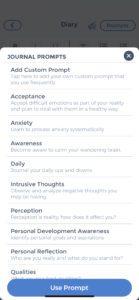 If you want to try daily journal but feel like you need some guidance, consider using a guided journal. Guided journals come with prompts and instructions to help you get started. They can be a great option for people who are new to journaling or who want a little extra help getting started. We’ve written a few different blog posts on prompts for various mental health conditions you may find useful. Here are a few nonetheless:
If you want to try daily journal but feel like you need some guidance, consider using a guided journal. Guided journals come with prompts and instructions to help you get started. They can be a great option for people who are new to journaling or who want a little extra help getting started. We’ve written a few different blog posts on prompts for various mental health conditions you may find useful. Here are a few nonetheless:
Mood Journal Prompts
These prompts can help you track your moods and identify patterns.
- What is your mood today?
- What are the things that are making you happy?
- What are the things that are making you sad?
- What are the things that are making you anxious?
- What are the things that are making you angry?
Weight Management Journal Prompts
If you’re trying to lose weight, these prompts can help you track your progress and healthy eating habits.
- What is your weight today?
- What did you eat today?
- How much water did you drink today?
- How much exercise did you do today?
- What are your goals for tomorrow?
Sleep-Related Journal Prompts
If you’re trying to improve your sleep habits, these prompts can help you track your progress.
- What time did you go to bed last night?
- What time did you wake up this morning?
- How many hours of sleep did you get?
- How rested do you feel?
Stress-related Journaling Prompts
If you’re trying to reduce stress in your life, these prompts can help you track your progress.
- What are the things that are causing you stress?
- What are the things that are making you feel calm?
- How much exercise did you do today?
- How well did you sleep last night?
Prompts related to Mental Triggers
- What are the things that are triggering your mental health symptoms?
- What are the things that are making you feel better?
- What are the things that are making your symptoms worse?
- What can you do to avoid or reduce your triggers?
- What can you do to cope with your triggers when they occur?
Prompts for coping with Anxiety using CBT
- What are your thoughts about the situation?
- What is the evidence for and against your thoughts?
- What is a more realistic or helpful way of thinking about the situation?
- How can you test out your new way of thinking?
- What are the consequences of your anxiety?
- How can you reduce the impact of your anxiety on your life?
A CBT thought journal can help with a number of different issues, including helping to identify and manage negative thoughts, behaviors, and emotions. It can also be used as a tool to help promote positive thinking and behavioral patterns. Additionally, a CBT thought journal can help to increase self-awareness and understanding, as well as provide a means of tracking progress over time. We have also written an entire blog post related journaling and prompts for anxiety management here.
Prompts for managing low mood with CBT
- What are your thoughts about the situation?
- What is the evidence for and against your thoughts?
- What is a more realistic or helpful way of thinking about the situation?
- How can you test out your new way of thinking?
Above all practice self-compassion. Which is the practice of being kind and understanding to yourself, especially during times of difficulty. It involves giving yourself the same compassion and care that you would give to someone else. Self-compassion is associated with a number of mental health benefits, including increased resilience, decreased anxiety and depression, and improved well-being.
CareClinic for Mental Health Management
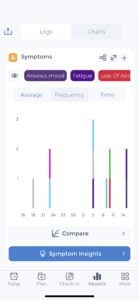 CareClinic is a self care app that can be used to help manage mental health. It can be used to track moods, medications, symptoms, appointments, and more. It is an ideal way of creating care plans (or treatment plans) that encompass all health modalities, such as medications, activities, therapy sessions, nutrition, and others. Together it helps you create a comprehensive routine along with reminders to ensure high adherence.
CareClinic is a self care app that can be used to help manage mental health. It can be used to track moods, medications, symptoms, appointments, and more. It is an ideal way of creating care plans (or treatment plans) that encompass all health modalities, such as medications, activities, therapy sessions, nutrition, and others. Together it helps you create a comprehensive routine along with reminders to ensure high adherence.
High adherence leads to better outcomes, and this is well documented in the scientific literature. Start by downloading the App for iOS or Android from the app store, and create notes in the diary, add your daily routine for self care or any medical treatments your doctor may have prescribed.
Over time monitor your interventions to confirm if you are feeling better and self reflect honestly. Make sure to record all modalities including sleep, medicine, and therapies to provide accurate data for your doctor which can lead to a different diagnosis. All the trackers are available to use directly in the Check-in screen on CareClinic, remember you can enable or disable any trackers you do not use.
Other benefits of using CareClinic over a physical logbook include the ability to password protect your data, set reminders, and email yourself or your therapist updates on your progress. The best part is that CareClinic also has many health integrations such as with Fitbit, Apple Health, and Google Fit to make tracking your progress even easier.
Will you use a Mental Health Planner?
Overall, using a journal to improve your mental health can be beneficial. If you are struggling with mental health, consider using a guided journal to help you get started. Guided journals come with daily prompts and instructions to help you get started. They can be a great option for people who are new to journaling or who want a little extra help getting started.
If you’re interested in using a mental health planner, consider using one of the daily prompts from this article to get started. The CareClinic app provides all the functionality needed to get the most out of your journaling experience. Creating a care plan that includes all health modalities can help you manage mental health and improve outcomes. What are you waiting for? Get started today! Install the CareClinic App today.

